| Date | Text | |
|---|---|---|
30 Nov 1924

Extinction |
Extinction (biology) Extinction of the Bubal hartebeest in North Africa. |
|
30 Nov 1924
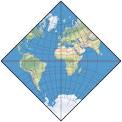
Adams hemisphere-in-a-square projection |
Adams hemisphere-in-a-square projection (cartography) Adams hemisphere-in-a-square projection published by American cartographer Oscar Sherman Adams. |
|
30 Nov 1924
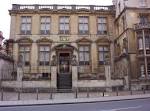
Museum of the History of Science |
Museum of the History of Science (history of science) Museum of the History of Science opens in the Old Ashmolean building in Oxford, set up by Robert Gunther based largely on the collection given by Dr Lewis Evans. |
|
30 Nov 1924

Pharmazie-Historisches Museum der Universität Basel |
Pharmazie-Historisches Museum der Universität Basel (history of science) Pharmazie-Historisches Museum der Universität Basel established by donation of the collection of pharmacist Josef Anton Häfliger. |
|
30 Nov 1924

Edwin Arthur Burtt |
Edwin Arthur Burtt (history of science) Edwin Arthur Burtt's The Metaphysical Foundations of Modern Physical Science is published. |
|
30 Nov 1924

Werner Heisenberg |
Werner Heisenberg (physics) Werner Heisenberg, Max Born and Pascual Jordan set out the matrix formulation of quantum mechanics. |
|
30 Nov 1924
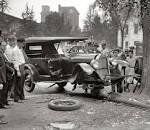
1926 |
1926 (technology) late 1925 or early 1926 – Vladimir K. Zworykin demonstrates a cathode ray tube television system using Braun tubes at the Westinghouse Electric laboratories in Pittsburgh, Pennsylvania. |
|
30 Nov 1924
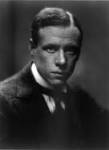
Sinclair Lewis |
Sinclair Lewis (other s) Sinclair Lewis's novel Arrowsmith is published in the United States, notable in having the culture of medical science as a principal theme. |
|
01 Jan 1925

Wolfgang Pauli |
Wolfgang Pauli (physics) Wolfgang Pauli announces his exclusion principle. |
|
07 Jan 1925
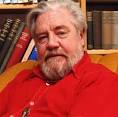
Gerald Durrell |
birth Gerald Durrell Gerald Durrell (died 1995), wildlife conservationist (born in British India). |
|
24 Jan 1925

Solar eclipse movie |
Solar eclipse movie In 1925, a motion picture of a solar eclipse was taken by the U.S. Navy from the dirigible Los Angeles. The craft was at an elevation of about 4,500-ft and positioned about 19 miles east of Montauk Point, Long Island, NY. This give a view of a total eclipse of the sun that lasted just over 2-min. Four astronomical cameras and a spectrograph were used as well as two moving picture cameras. This was the first time in the U.S. that a dirigible had been used as a platform for observation of a total eclipse of the sun. The first U.S. attempt to photograph one from an aircraft 10 Sep 1923 was unsuccesful due to cloudy conditions, but on 28 Apr 1930, a flight over California sponsored by the U.S. Naval Observatory recorded a total solar eclipse. |
|
30 Jan 1925
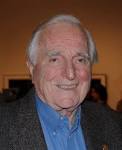
Douglas Engelbart |
birth Douglas Engelbart Douglas Engelbart (died 2013), American pioneer in human–computer interaction. |
|
03 Feb 1925
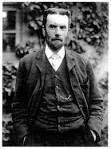
Oliver Heaviside |
death Oliver Heaviside Oliver Heaviside (born 1850), physicist. |
|
22 Feb 1925
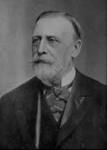
Thomas Clifford Allbutt |
death Thomas Clifford Allbutt Thomas Clifford Allbutt (born 1836), physician. |
|
23 Feb 1925

Sir Thomas Edward Thorpe |
death Sir Thomas Edward Thorpe Died 23 Feb 1925 at age 79 (born 8 Dec 1845). English chemist and author whose work in inorganic chemistry included the supervision of research into determining the presence of arsenic in beer and how to make pottery glazes without lead. In his early studies, while a chemistry student under Roscoe, he became a research assistant in his pioneering research work on vanadium, and the determination of its atomic weight. After graduation he worked first with Bunsen and then Kekulé. He then spent time teaching at the Royal College of Science, London (which became Imperial College). Later in life, he was director of the government laboratories (1894-1909). His research included study of phosphorus fluorides and oxides, in which he discovered the valence of five for phosphorus in phosphorus pentafluoride. As well as textbooks in chemistry, he wrote about chemistry history. |
|
28 Feb 1925

Louis Nirenberg |
birth Louis Nirenberg Louis Nirenberg, Canadian-born American mathematician. |
|
13 Apr 1925

Elwood Haynes |
death Elwood Haynes Died 13 Apr 1925 at age 67 (born 14 Oct 1857). American inventor who built one of the first successful gasoline-powered automobiles. In 1886, when natural gas was found in his hometown of Portland, Indiana, Haynes organized a company to supply it to the town. He devised a method to dehydrate the gas prior to its being pumped through the lines. Also in 1886, he invented a small vapor thermostat used on natural gas. In 1893, he purchased a gasoline engine and designed a "horseless carriage." When Haynes was searching for an alloy that would make a durable spark plug electrode, he invented stellite alloy, which invention is still contributing to society today. Harder than steel and resistant to corrosion, this metal now plays an important part in fabrication of aeronautical materials suitable for exploration of outer space. |
|
01 May 1925

Rhenium |
Rhenium (chemistry) Rhenium is discovered by Walter Noddack and Ida Tacke in Berlin, the last stable, non-radioactive naturally-occurring element to be found. |
|
01 May 1925

Scott Carpenter |
birth Scott Carpenter Scott Carpenter (died 2013), American astronaut. |
|
10 May 1925

Scopes hearing |
Scopes hearing In 1925, John T. Scopes was given a preliminary hearing before three judges. He had been arrested and charged under a new Tennessee's state law, the Butler Act, which prohibited the teaching of Darwin's theory of evolution in public schools. Scopes had agreed to participate in a challenge to that law, with the support of local leaders in Dayton, Tennessee, and the American Civil Liberties Union. A few weeks later, on 10 Jul 1925, the trial began, which became known as the “Scope's Monkey Trial”. At its end, on 25 Jul 1925, he was found guilty and fined $100. Although upon appeal the fine was ruled excessive and over-ruled, the state law itself was not found unconstitutional. Thereafter, the law was not enforced, but it was not repealed until 42 years later, on 17 May 1967. |
|
27 May 1925

John L. Harper |
birth John L. Harper John L. Harper (died 2009), British biologist, specializing in ecology and plant population biology. |
|
03 Jun 1925
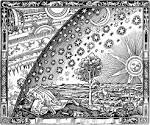
Camille Flammarion |
death Camille Flammarion Camille Flammarion (born 1842), astronomer. |
|
13 Jun 1925

Charles Francis Jenkins |
Charles Francis Jenkins (technology) Charles Francis Jenkins achieves the first synchronized transmission of pictures and sound, using 48 lines, and a mechanical system. A 10-minute film of a miniature windmill in motion is sent across 5 miles from Anacostia to Washington, DC. The images are viewed by representatives of the Bureau of Standards, the U.S. Navy, the Department of Commerce and others. Jenkins calls this "the first public demonstration of radiovision". |
|
17 Jun 1925

Alexander Shulgin |
birth Alexander Shulgin Alexander Shulgin (died 2014), American psychopharmacologist. |
|
22 Jun 1925
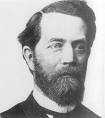
Felix Klein |
death Felix Klein Felix Klein (born 1849), German mathematician. |
|
08 Jul 1925
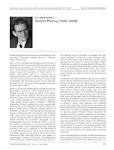
Norbert Pfennig |
birth Norbert Pfennig Norbert Pfennig (died 2008), German microbiologist. |
|
21 Jul 1925
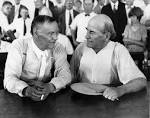
Scopes Trial |
Scopes Trial (biology) Scopes Trial: In Dayton, Tennessee, high school biology teacher John T. Scopes is found guilty of teaching evolution in class and fined $100. |
|
26 Jul 1925

Gottlob Frege |
death Gottlob Frege Gottlob Frege (born 1848), mathematician. |
|
10 Aug 1925

Stanislav Brebera |
birth Stanislav Brebera Stanislav Brebera (died 2012), Czech chemist. |
|
19 Aug 1925

Frederic Richards |
birth Frederic Richards Frederic Richards (died 2009), American biochemist and biophysicist known for solving the crystal structure of the ribonuclease S enzyme in 1967 and for defining the concept of solvent-accessible surface. |
|
27 Sep 1925

Robert G. Edwards |
birth Robert G. Edwards Robert G. Edwards (died 2013), British physiologist and pioneer of in vitro fertilisation; winner of the 2010 Nobel Prize in Physiology or Medicine. |
|
02 Oct 1925

John Logie Baird |
John Logie Baird (technology) John Logie Baird successfully transmits the first television pictures with a greyscale image, in London. |
|
13 Oct 1925

Margaret Roberts |
birth Margaret Roberts Margaret Roberts (died 2013), chemist and Prime Minister of the United Kingdom. |
|
22 Oct 1925
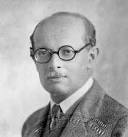
Julius Edgar Lilienfeld |
Julius Edgar Lilienfeld (technology) Julius Edgar Lilienfeld files the first patent for a form of field-effect transistor. |
|
31 Oct 1925

John Pople |
birth John Pople John Pople (died 2004), British theoretical chemist; winner of the 1998 Nobel Prize in Chemistry. |
|
31 Oct 1925
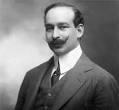
José Ingenieros |
death José Ingenieros José Ingenieros (born 1877), polymath. |
|
04 Nov 1925

Charles F. Brannock |
Charles F. Brannock (technology) Charles F. Brannock files a patent for the Brannock Device for measuring shoe sizes. |
|
01 Dec 1925

Martin Rodbell |
birth Martin Rodbell Martin Rodbell (died 1998), American biochemist, recipient of the Nobel Prize in Physiology or Medicine |
|
11 Dec 1925

Paul Greengard |
birth Paul Greengard Paul Greengard, American neuroscientist, recipient of the Nobel Prize in Physiology or Medicine |
|
25 Dec 1925

Karl Abraham |
death Karl Abraham Died 25 Dec 1925 at age 48 (born 3 May 1877). German psychoanalyst who studied who studied the role of childhood sexual trauma in relation to the symptoms of mental illness. He was initiated into psychoanalysis by Carl Gustav Jung (1904). He first met Sigmund Freud in 1907, and subsequently became one of his most reliable collaborators. Covering a wide range, Abraham's papers include work on depression, mania, auto erotism, repressed hate, as well as others on applied psychoanalysis that include papers on the Day of Atonement and a major one (1909) in which he connected myths with dreams and viewed both as wish-fulfillment fantasies. Abraham founded the Berlin Psychoanalytic Society (1910). He made pioneering efforts in the psychoanalytic treatment of manic- depressive psychosis. |